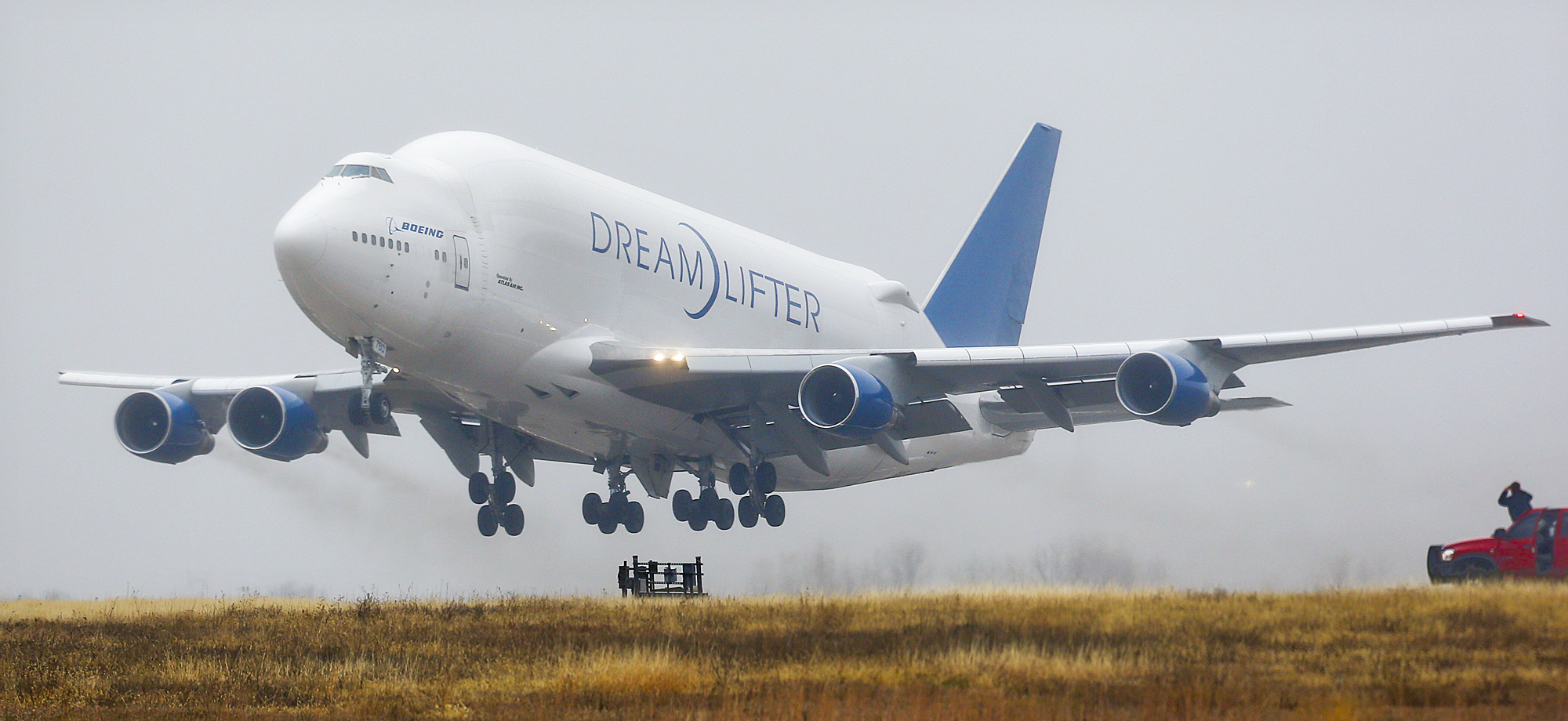Jumbo jet mistakenly lands at small Kansas airport
Friday, November 22, 2013
WICHITA, Kan. - The pilot of a cargo-hauling jumbo jet mistakenly landed the Boeing 747 at a small Kansas airport instead of the Air Force base a few miles away where he was supposed to set the plane down.
The 747, with a two-man crew and no passengers, intended to touch down at McConnell Air Force Base in Wichita, where it was supposed to deliver parts for Boeing's new 787 Dreamliner to a nearby company that makes large sections of the next-generation jet.
Instead, the mammoth freighter landed 8 miles north, at the smaller Col. James Jabara Airport.
Hours later, the jet took off again and within minutes landed at its original destination.
The area has three airports with similar runway configurations: the Air Force base, the Jabara airfield and a third facility in between called Beech Airport.
Boeing owns the plane, but it is operated by Atlas Air Worldwide Holdings, a New York-based cargo-hauler that also provides crews or planes to companies that need them.
Atlas Air spokeswoman Bonnie Rodney declined to answer questions and referred inquiries to Boeing.
"We are working with Atlas Air to determine the circumstances," Boeing said in a written statement.
The Federal Aviation Administration planned to investigate whether the pilot followed controllers' instructions or violated any federal regulations.
The pilot sounded confused in his exchanges with air traffic control, according to audio provided by LiveATC.net.
"We just landed at the other airport," the pilot told controllers shortly after the landing.
Once the pilot says they're at the wrong airport, two different controllers jump in to confirm that the plane is safely on the ground and fully stopped.
The pilot and controllers then go back and forth trying to figure out which airport the plane is at. At one point, a controller reads to the pilot the coordinates where he sees the plane on radar. When the pilot reads the coordinates back, he mixes up "east" and "west."
"Sorry about that, couldn't read my handwriting," the pilot said.
A few moments later, the pilot said he thinks he knows where they are. He then asks how many airports there are to the south of McConnell. But the airports are north of McConnell.
"I'm sorry, I meant north," the pilot said when corrected. "I'm sorry. I'm looking at something else."
They finally agree on where the plane is after the pilot reports that a smaller plane, visible on the radar of air traffic control, has just flown overhead.
The modified 747 is one of a fleet of four that hauls parts around the world to make Boeing's 787 Dreamliner. The "Dreamlifter" is a 747-400 with its body expanded to hold whole fuselage sections and other large parts. If a regular 747 with its bulbous double-decker nose looks like a snake, the bulbous Dreamlifter looks like a snake that swallowed a rat.
According to flight-tracking service FlightAware, this particular DreamLifter has been shuttling between Kansas and Italy, where the center fuselage section and part of the tail of the 787 are made.
McConnell is next to Spirit AeroSystems, which also does extensive 787 work. The nearly finished sections are then shipped to Boeing plants in Everett, Wash., and North Charleston, S.C. for assembly into finished airplanes. Boeing is on track to make 10 of them per month by the end of this year.
Because 787 sections are built all over the world -- including wings made in Japan -- the Dreamlifters are crucial to the 787's construction. Boeing says the Dreamlifter cuts delivery time down to one day from as many as 30 days.
Although rare, landings by large aircraft at smaller airports have happened from time to time.
In July last year, a cargo plane bound for MacDill Air Force base in Tampa, Fla., landed without incident at the small Peter O. Knight Airport nearby. An investigation blamed confusion identifying airports in the area, and base officials introduced an updated landing procedure to mitigate future problems.
The following month, a Silver Airways pilot making one of the Florida airline's first flights to Bridgeport, W. Va., mistakenly landed his Saab 340 at a tiny airport in nearby Fairmont.
The pilot touched down safely on a runway that was just under 3,200 feet long and 75 feet wide -- normally considered too small for the passenger plane.

